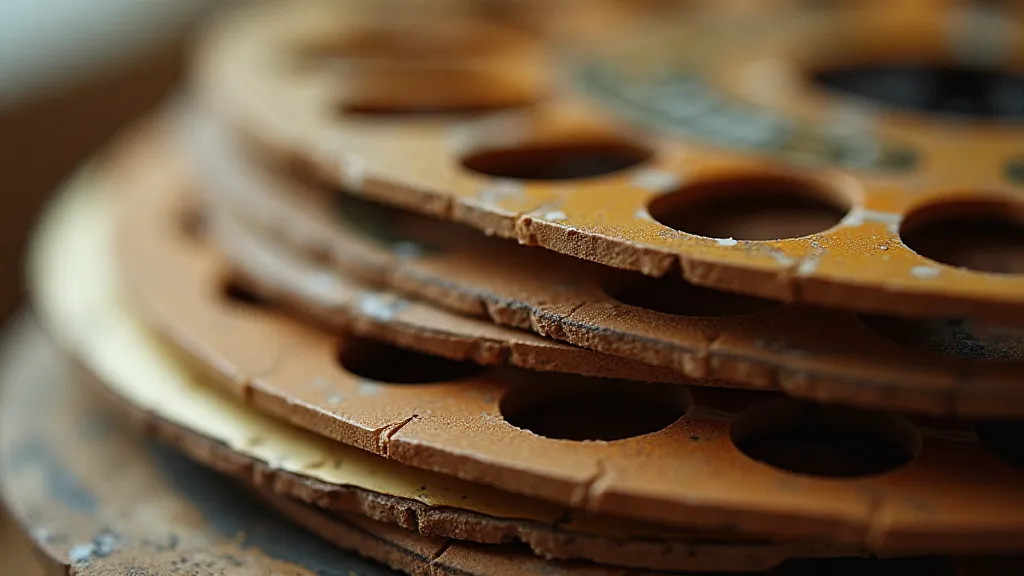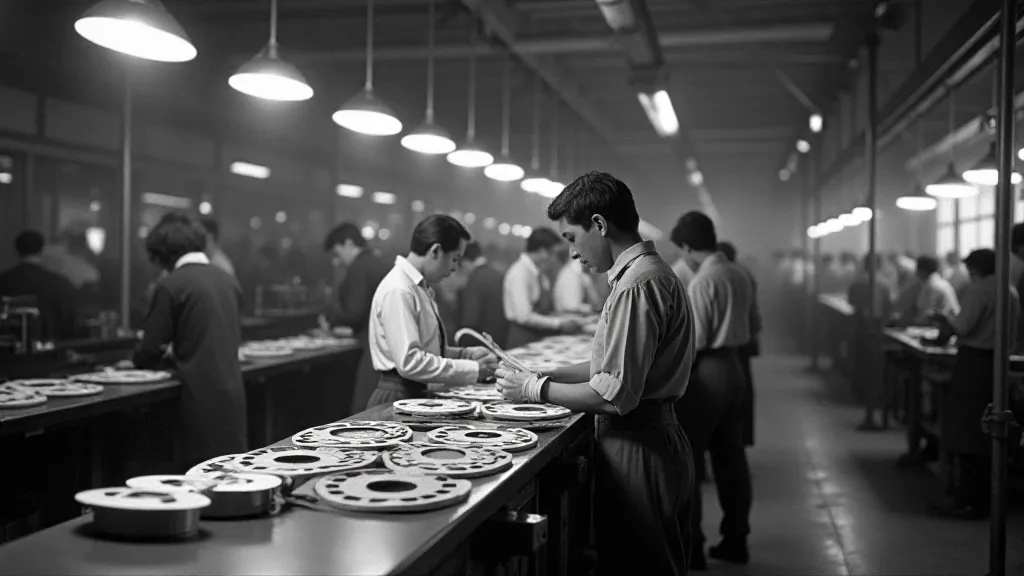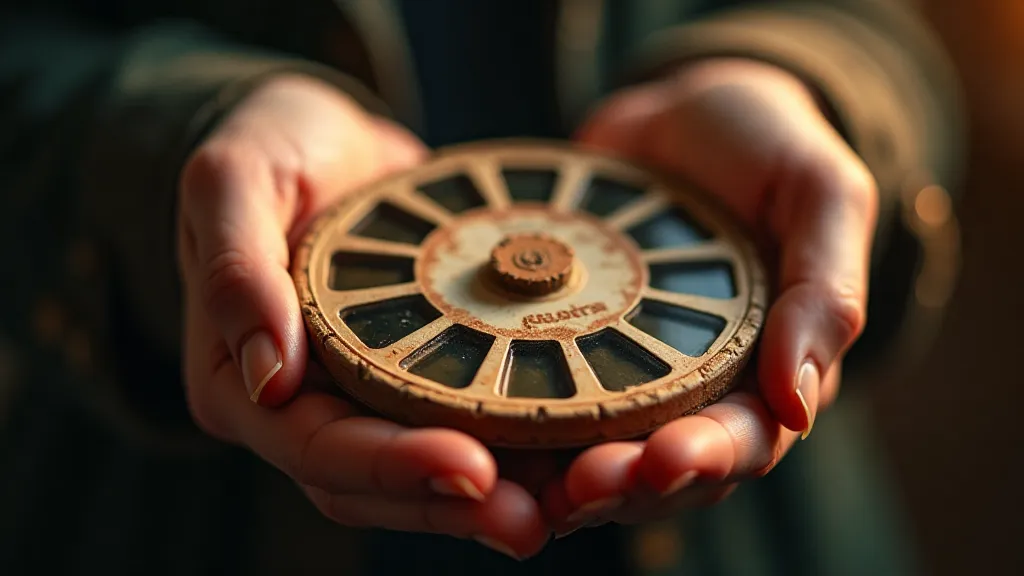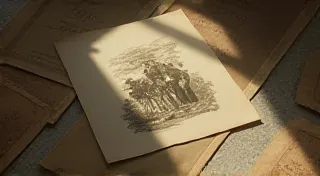The Algorithm of Awe: Dissecting the Engineering Behind View-Master Reels
There’s a specific scent associated with my childhood – the faint aroma of aged cardboard and dried adhesive, a fragrance intrinsically linked to the satisfying click of a View-Master reel advancing. It wasn’s just a toy; it was a portal. A portal to exotic locales, fantastical stories, and moments frozen in time. But behind that nostalgic rush lies a surprisingly sophisticated piece of engineering, a microcosm of mid-20th-century ingenuity. Let’s journey beyond the surface appeal and explore the “algorithm of awe” – the technical details that made View-Master reels so captivating.
My grandfather, a meticulous engineer himself, gifted me my first View-Master when I was barely old enough to hold it steady. He’s the one who instilled in me an appreciation not just for the imagery itself, but for the craftsmanship that enabled it. He's since passed, but I still have that original viewer, and a collection of reels spanning decades. Each click, each picture, brings him back.
The Anatomy of a Reel: More Than Meets the Eye
A View-Master reel appears deceptively simple: a circular cardboard disc containing a stack of miniature, reversed images. But the precision required to manufacture these reels, and achieve a quality viewing experience, was significant. Let's break down the key components.
The reel itself is constructed of multiple layers of cardboard. The core layers provided structural integrity, while the outer layers received the photographic images. The photographic printing process itself was a crucial element. Initially, images were printed on thin film using a positive-to-negative process, a complex operation requiring specialized equipment and meticulous quality control. The thinness of the film, combined with the relatively fragile cardboard, demanded exceptional care throughout the manufacturing process.

Each reel contains twenty-four miniature images, arranged in pairs. The images were printed in reverse, a clever trick that allowed the viewer to see a "correct" image when the reel was inserted into the viewer. This reversal added another layer of complexity to the printing process. The consistency of the image density and clarity across all twenty-four images was vital for a pleasant viewing experience. Early reels, particularly those from the 1930s, often exhibit variations in image quality, a testament to the evolving printing techniques and the challenges of maintaining consistent standards. These early reels often told larger stories, and some of the most fascinating of these captured complete narratives – a fascinating glimpse into how narratives were presented decades ago; more on that in Ephemeral Kingdoms: The Fading Majesty of View-Master Story Reels.
The Evolution of Image Quality: From Grainy Beginnings to Sharp Detail
The quality of the images themselves varied considerably over the years. Early reels, produced in the 1930s and 1940s, often suffered from noticeable graininess. This was a product of the photographic processes available at the time, which often involved relatively low-resolution film and rudimentary printing techniques. However, advancements in photography and printing technology steadily improved image clarity. The introduction of higher-resolution film stocks and improved printing techniques led to noticeably sharper and more detailed images in later reels.
The color palette also evolved. The earliest reels were primarily black and white. The transition to color imagery was gradual, with early color reels exhibiting somewhat muted and unsaturated colors. As color printing technology advanced, the colors became richer and more vibrant. The color separation process itself was incredibly intricate, requiring multiple printing plates and precise registration to ensure accurate color reproduction. The historical context surrounding these images—how they shaped perceptions of significant events—is a rich topic for exploration; delve deeper into Frozen Moments: How View-Master Reels Shaped the Perception of Iconic Historical Events.
The Viewer: A Simple Device, Precisely Engineered
The View-Master viewer, while seemingly simple, was also a product of thoughtful engineering. The rotating drum, the focusing lens, and the light path all had to work in perfect harmony to deliver a clear and stable image. Early viewers were constructed primarily of bakelite, a durable and heat-resistant plastic that was commonly used in consumer products during the mid-20th century. Later viewers incorporated other materials, such as metal and other plastics.
The focusing mechanism, which allowed viewers to adjust the image clarity, was surprisingly sophisticated for its time. It relied on a series of lenses and mirrors to manipulate the light path and bring the image into focus. The stability of the viewer was also crucial for a comfortable viewing experience. Any wobble or vibration could disrupt the image and cause eye strain.
The Manufacturing Process: A Labor of Precision
The manufacture of View-Master reels was a labor-intensive process, involving numerous steps and a significant degree of manual labor. Each reel required careful handling throughout the manufacturing process to prevent damage to the delicate photographic images. The assembly of the reels involved the precise alignment and gluing of the cardboard layers, followed by the insertion of the photographic images into the slots. Quality control inspectors meticulously examined each reel to ensure that it met the company’s exacting standards.

The sheer volume of reels produced over the decades – millions upon millions – is a testament to the company’s manufacturing prowess and the enduring appeal of the product. The ability to consistently produce reels of such high quality, at such a large scale, required a remarkable level of organizational skill and technical expertise.
Beyond Nostalgia: The Enduring Appeal and Collector's Value
Today, vintage View-Master reels and viewers are highly sought after by collectors. The rarity of certain reels, the historical significance of the imagery, and the nostalgic appeal of the product all contribute to their collector’s value. Early reels, particularly those featuring rare or unusual subjects, can command significant prices. Reels in excellent condition, with original packaging, are especially prized by collectors. The restoration of damaged reels is a delicate process, requiring specialized skills and a deep understanding of the materials involved. Attempting to repair these reels yourself can be risky; professional restoration services are often the best option. The narratives woven through these images often reflect a specific moment in time, reflecting evolving cultural understandings and historical perspectives; further explore this through The Tapestry of Time: Connecting View-Master Reels to Broader Historical Narratives.
But beyond the financial value, there’s the inherent charm of holding a piece of history in your hands. To click through those miniature images, to transport yourself to a different time and place, is an experience that transcends mere nostalgia. It’s a connection to a simpler era, a testament to human ingenuity, and a reminder of the power of imagination. Often, the very choice of what to photograph – and how to portray it – says a great deal about the values and biases of the time; consider the significance of color in shaping these perceptions through Chromatic Echoes: Unearthing Lost Narratives in View-Master Reels.

The selection of locations and subject matter was also carefully considered, reflecting the aspirations and interests of the era. The reels offered a window into a world often inaccessible to the average person, sparking curiosity and inspiring dreams of exploration. The images weren't simply representations of reality; they were carefully curated experiences, designed to evoke specific emotions and create a sense of wonder.
The company’s commitment to quality extended beyond the technical aspects of reel and viewer production. They also invested heavily in content creation, commissioning photographers and writers to develop engaging and informative narratives. The accompanying text, often printed on separate cards, provided context and enhanced the viewing experience. These narratives weren't simply descriptive; they were often imbued with a sense of adventure and romance, further captivating the audience.
The enduring popularity of View-Master reels can be attributed to a combination of factors, including their technological innovation, their artistic merit, and their ability to transport viewers to different worlds. They offered a unique blend of education and entertainment, making them a valuable tool for both children and adults. The collective memory associated with these reels remains powerful, evoking feelings of nostalgia and reminding us of a simpler time.
The legacy of View-Master reels extends far beyond their initial popularity. They remain a cherished collectible for enthusiasts and a testament to the power of visual storytelling. The technology may have evolved, but the desire to experience wonder and explore new worlds remains timeless. As we continue to seek out new ways to connect with the past and with each other, the simple act of clicking through a View-Master reel offers a moment of quiet reflection and a reminder of the enduring power of human imagination.
The artistry involved in producing these reels, from the photographic printing to the intricate design of the reels themselves, is a testament to the dedication and skill of the individuals who brought them to life. Their contributions have left an indelible mark on our cultural landscape, ensuring that View-Master reels will continue to inspire and delight generations to come. The subtle nuances in color, the careful composition of the images, all contributed to the overall aesthetic appeal and enhanced the viewing experience. The company’s attention to detail extended to every aspect of the product, ensuring that each reel was a work of art.
Ultimately, the “algorithm of awe” – the intricate combination of engineering, artistry, and memory that makes View-Master reels so captivating – remains as potent today as it was decades ago. The simple act of holding a reel in your hands, clicking through the images, and immersing yourself in the stories it tells is an experience that transcends time and connects us to a shared cultural heritage.





